This is a small, energetic songbird with gray plumage complemented by light buffy flanks and a distinctive head pattern consisting of a black cap, white cheek, and black throat while the adult male displays a striking red-orange crest, which is particularly noticeable when raised.
Meet the Black-capped chickadee
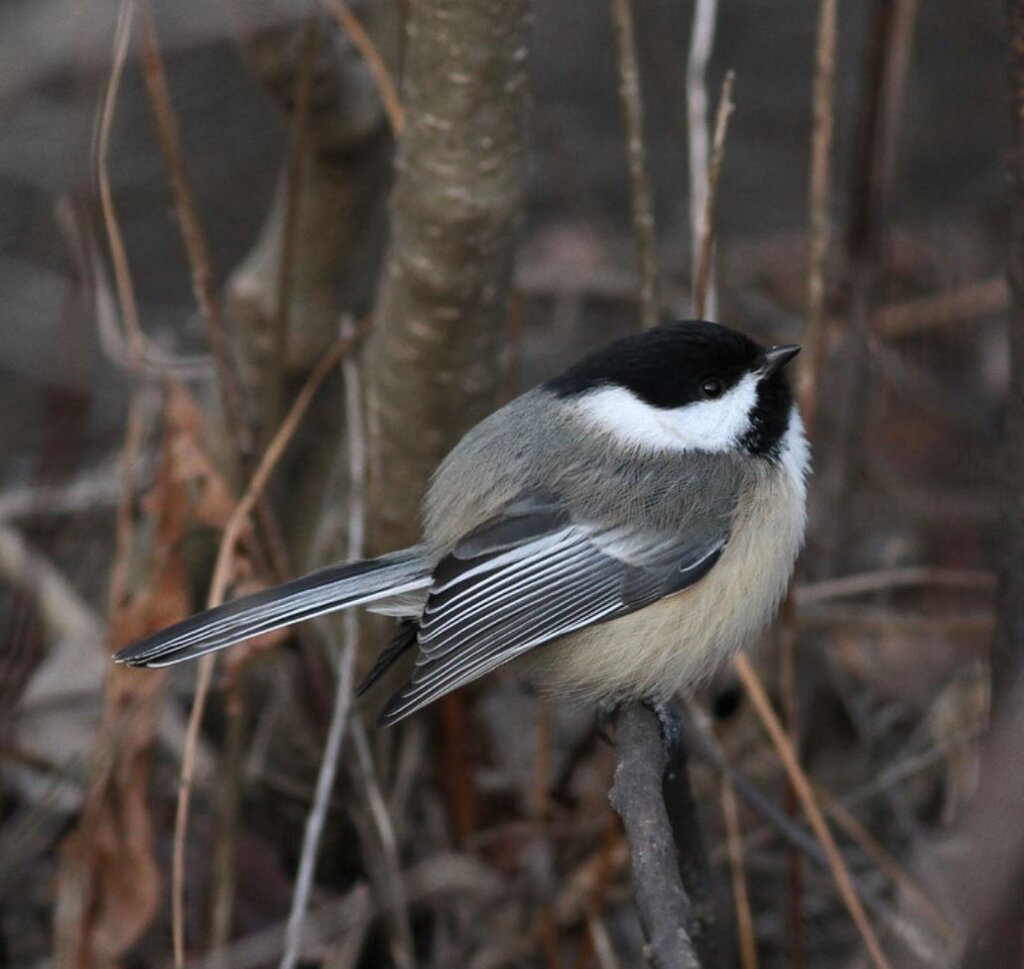
“Black-capped Chickadee” by Fyn Kynd is licensed under CC BY 2.0.
The black-capped chickadee (Poecile atricapillus), can be recognized by its distinctive black cap and bib with white sides on the face. Its underparts are white with rusty brown on the flanks, while its back is gray and tail is typically slate gray. Its total body length is 12–15 cm (4.7–5.9 in), wingspan ranges from 16–21 cm (6.3–8.3 in), weighing in at 9–14 g (0.32–0.49 oz).
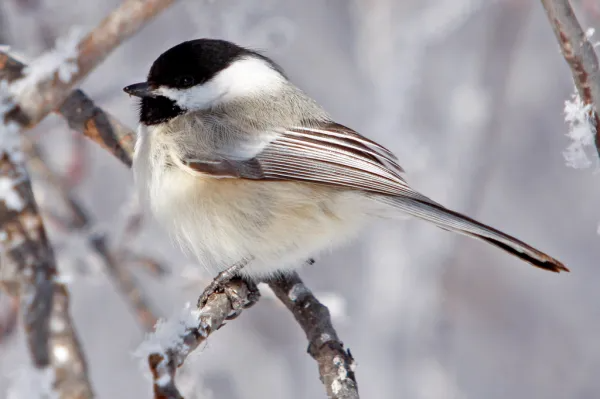
by USFWS Headquarters is licensed under CC BY 2.0.
Both sexes appear similar, although males are slightly larger and longer than females.
The black-capped chickadee closely resembles the Carolina chickadee, and although size is often used to differentiate between them, it is not a reliable indicator. The main distinguishing feature is in the wing feathers, where the black-capped chickadee displays larger and more conspicuous white edges compared to the Carolina chickadee. Additionally, the Carolina chickadee is sometimes misidentified as a black-capped chickadee due to feather dystrophy, a condition that can cause the primary feathers to appear slimmer and is often caused by malnourishment or illnesses such as fatty liver disease.
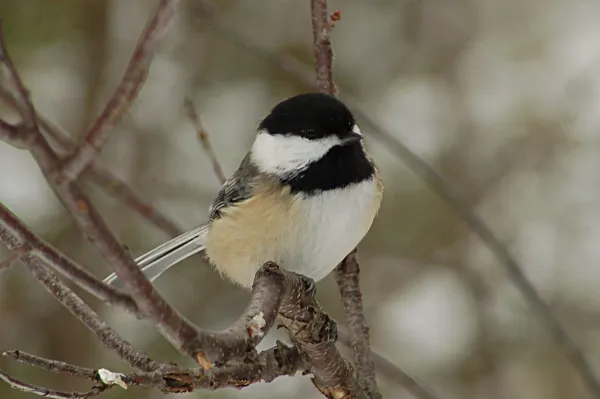
by Don Henise is licensed under CC BY 2.0.
This bird is native to and resides in large parts of North America.
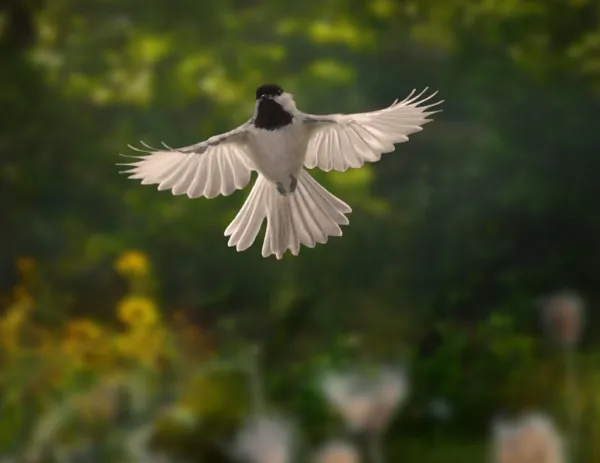
“Black-capped Chickadee in flight 09-05-2012 106” by Richard Hurd is licensed under CC BY 2.0.
These birds typically reside in one area year-round, but they may migrate southward, both within and outside their usual range, during the fall or winter season. It resides in montane coniferous forests and areas with stunted bushes and evergreen growth. This bird feeds restlessly on small branches, often flitting between gleaning and hovering. Its song is a somewhat piercing series of high-pitched, thin “tsi” notes, while its calls are similar to its song elements.
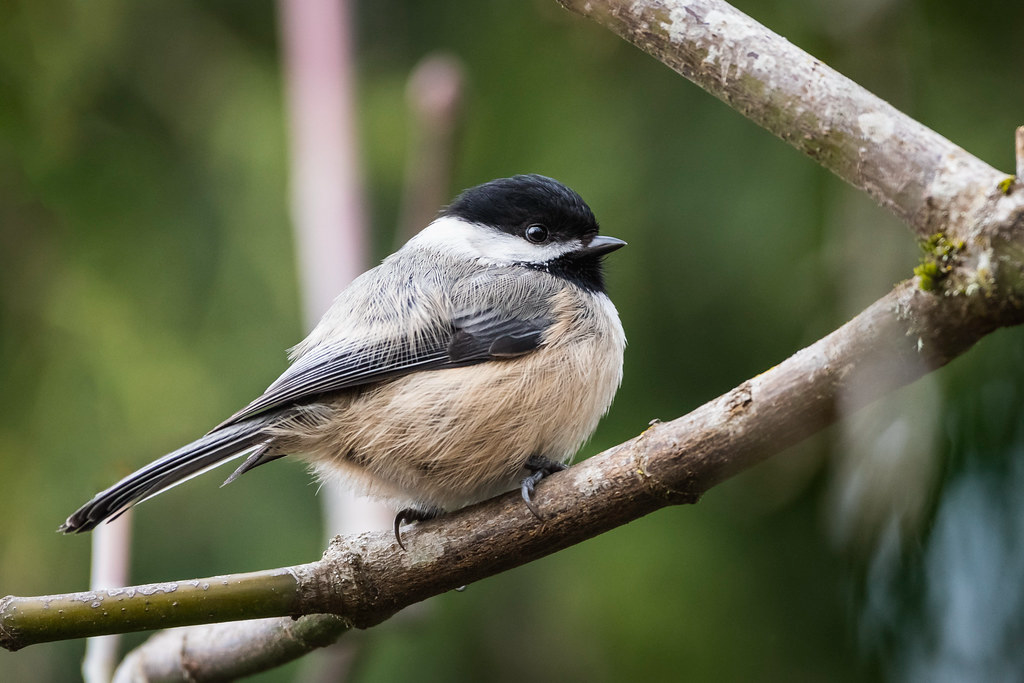
“Black-capped Chickadee” by Colin Durfee is licensed under CC BY 2.0.
During the summer, birds, particularly caterpillars, make up a significant portion of their diet. They can be seen hopping along tree branches, searching for insects, and sometimes even hanging upside down or hovering in the air to catch them. In the winter, seeds, and berries become more important, but insect eggs and pupae remain a part of their diet. Black oil sunflower seeds are a common food source readily taken from bird feeders. To open these seeds, the birds will take them in their beak and fly to a nearby tree to hammer them on a branch. Black-capped chickadees, like many other species in the Paridae family, also commonly cache their food. They store items such as seeds and occasionally insects in various locations such as bark, dead leaves, clusters of conifer needles, or knotholes. Remarkably, they can remember the location of their caches for up to 28 days, and even recall the relative quality of the stored items within the first 24 hours.
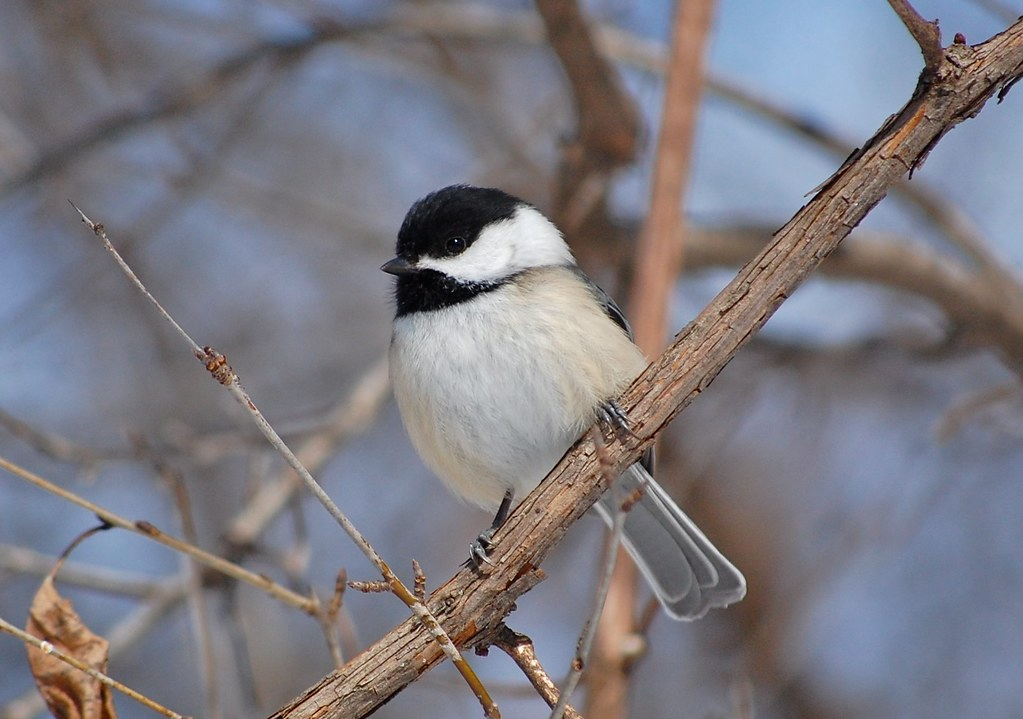
“Black Capped Chickadee” by patrickhashley is licensed under CC BY 2.0.
During winter, black-capped chickadees often congregate in groups with other bird species, such as titmice, nuthatches, and warblers, to forage for food. The chickadees act as leaders, alerting the group to food sources with their distinctive calls. This cooperation helps the birds find food more efficiently. Within the flock, black-capped chickadees establish a strict social hierarchy, where males and older birds typically have higher status than females and juveniles.
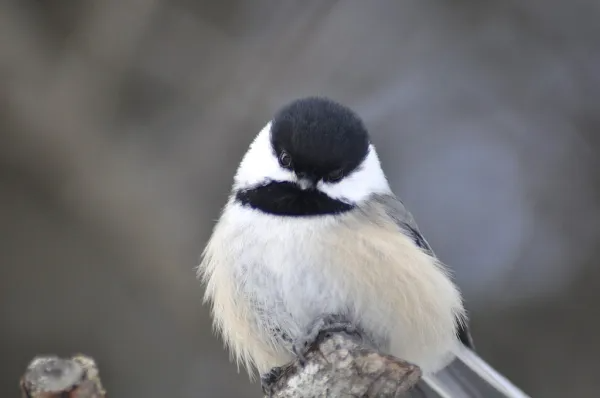
“Black-capped Chickadee” by ethan.gosnell2 is licensed under CC BY-SA 2.0.
At night, these birds usually sleep alone in dense vegetation or cavities, although they may occasionally sleep together in groups. Their sleeping posture involves tucking their beak under their shoulder feathers. In flight, black-capped chickadees have a slightly undulating movement and fly at an average speed of around 20 km/h (12 mph).
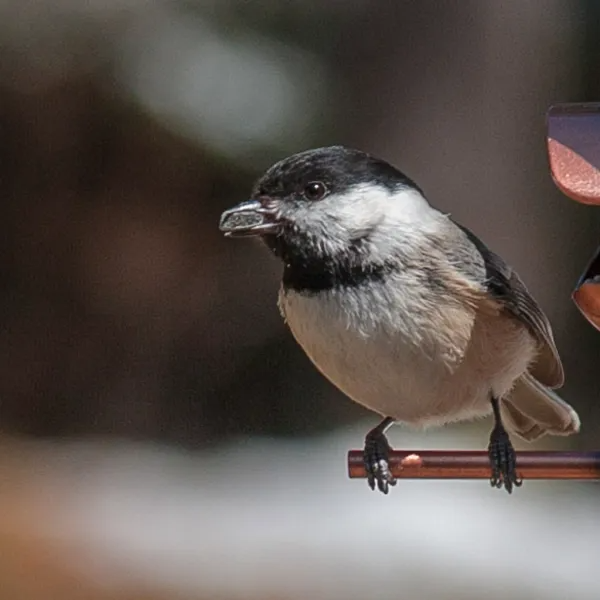
“Black-Capped Chickadee” by Me in ME is licensed under CC BY 2.0.
The black-capped chickadee is known to nest in tree holes located 1-7 meters above the ground. The nesting season lasts from late April to June, during which the female constructs the nest using coarse materials like moss or bark strips as a base and finer materials like mammal hair as a lining. The eggs are white with reddish-brown dots concentrated at the larger end, and the clutch size ranges from six to eight. Incubation, which lasts for 11-14 days, is done solely by the female, who is fed by the male. If the nest is disturbed, the female may hiss explosively to deter predators. The hatchlings are born naked with their eyes closed and are altricial. They are fed by both parents but are brooded only by the female, who receives food from the male. The young leave the nest 12-16 days after hatching, and the parents continue to feed them for several weeks until they can catch food on their own.
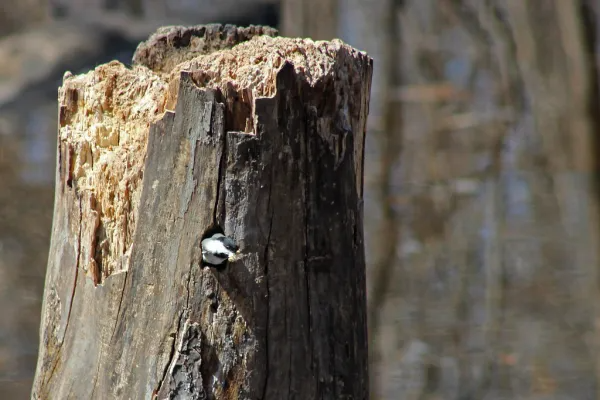
“Black-capped Chickadee” by U.S. Fish and Wildlife Service – Midwest Region is marked with Public Domain Mark 1.0.
This bird is regarded as of Least Concern on the IUCN Red List.

“Black-capped Chickadee” by Matt Tillett is licensed under CC BY 2.0





